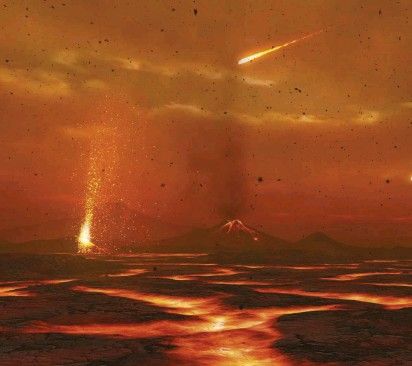15 Billion Years in 7 Days The Origins Of The Universe

In The Beginning...
We all know how the story goes, on the first day of creation God said let there be light and by the 7th day within a mere 168 hours the creation the universe with all its intricacies along with Earth and its inhabitants had been completed. This is the story a lot of us would have been brought up with. However we then get taught that the universe is actually 15 billion years old with the Earth itself being over 4.5 billion years old. To understand how these seemingly contradictory accounts can both be correct, it is important to consider both the scientific explanation of the origins of the universe and life on Earth, as well as the deeper meaning behind the biblical creation story.
The Scientific Approach
To try and quickly summarise decades of scientific research and discovery in a couple paragraphs… The universe is estimated to be around 15 billion years old, and it is widely accepted among scientists that the Big Bang marked its beginning. The Big Bang was a tremendous explosion of energy, the likes of which are beyond human comprehension. In its aftermath, the universe was filled with particles, which eventually combined to create clouds of gas and dust. One of these clouds formed our solar system. The gravitational force within the cloud drew the material together, and at its centre, the gravitational force became so intense that hydrogen atoms fused, releasing a massive amount of energy and giving rise to the sun. The leftover material collected into clusters, some of which grew massive enough to have their own gravitational field and shape into planets, including Earth.

Earth's early atmosphere consisted of hydrogen and helium an atmosphere and Earth itself reaching temperatures up to 3600 degrees fahrenheit, condition that are far from being able to support life. As time went on the Earth cooled and volcanic eruptions spewed water vapor and carbon dioxide into the atmosphere. Oceans formed, and primitive life eventually evolved in these oceans. From there, life on Earth has evolved over millions of years to reach its present state.
So, how does this scientific understanding of the origins of the universe and life on Earth fit with the creation story as it is described in the Bible?
The Biblical Approach
The biblical account of creation presents a detailed narrative of the creation of the world, with each day having its own specific theme: light, heaven, water and land separation, sun, moon and stars, water creatures, land creatures, and rest. This results in a total of seven themes for the seven days of creation. However, the question arises as to whether this account should be taken as factual or if it is open to interpretation.
One perspective is that the creation story should be interpreted literally, as a historical account of the origins of the world. This view is supported by some religious interpretations of the text, which hold that the story is meant to be taken at face value and not questioned or analysed further.
On the other hand, there are many scholars and theologians who argue that the creation story should be interpreted metaphorically or symbolically.
Rambam, a Jewish scholar, in the 12th century with a reputation for holding slightly more controversial views, went further in his book "Guide to the Perplexed," interpreting the biblical stories leading up to Abraham as moral lessons rather than factual accounts. It's not just him, more recently Rav Soloveitchik, a highly respected Lithuanian Rabbi who lived in the 20th century and Rabbi Sacks, the late Chief Rabbi of the United Kingdom, held the view that the account of creation should not be taken as historical fact.
Rav Soloveitchik, known for his philosophical approach to religion, argued that the creation story is based on the idea that we should strive to live in accordance with 'God's ways'. In his view, the story teaches that just as God created the world, humans should also seek to create and improve upon the world, eradicating darkness, evil, and chaos and replacing them with light, good, and order. He also pointed to the concept of God creating the world in six days of creativity and one day of rest as a model for how we should live our lives, with six days of proactive work and one day of reflection and gratitude.
Rabbi Sacks, arguably the most influential scholar in bridging the gap between religion and science, illustrates in his book, "The Great Partnership," how these two fields can work together to help us understand the world and universe we inhabit. Rabbi Sacks argues that despite the modern day conflict between religion and evolution, the concept of evolution is actually hinted at in the biblical account of creation. In the passage about the day of rest, the last word in the passage is the Hebrew word "la'asot", which translates to "function." Some commentators interpret this to mean that the creation was designed to continue to create itself, essentially evolving over millions of years.
Can They Both be True?
This idea challenges the traditional notion that religion and science are at odds with each other. It has often been assumed that the more scientific discoveries that are made, the more religion is seen as false. However, Rabbi Sacks suggests that religion and science can complement each other. While science helps us understand how things happen, it cannot answer the why. This is where religion comes in, offering explanations for the purpose and meaning of the world.
For a long time, religion and science have been viewed as adversaries. Perhaps it is time to appreciate both fields for the unique insights and perspectives they offer.